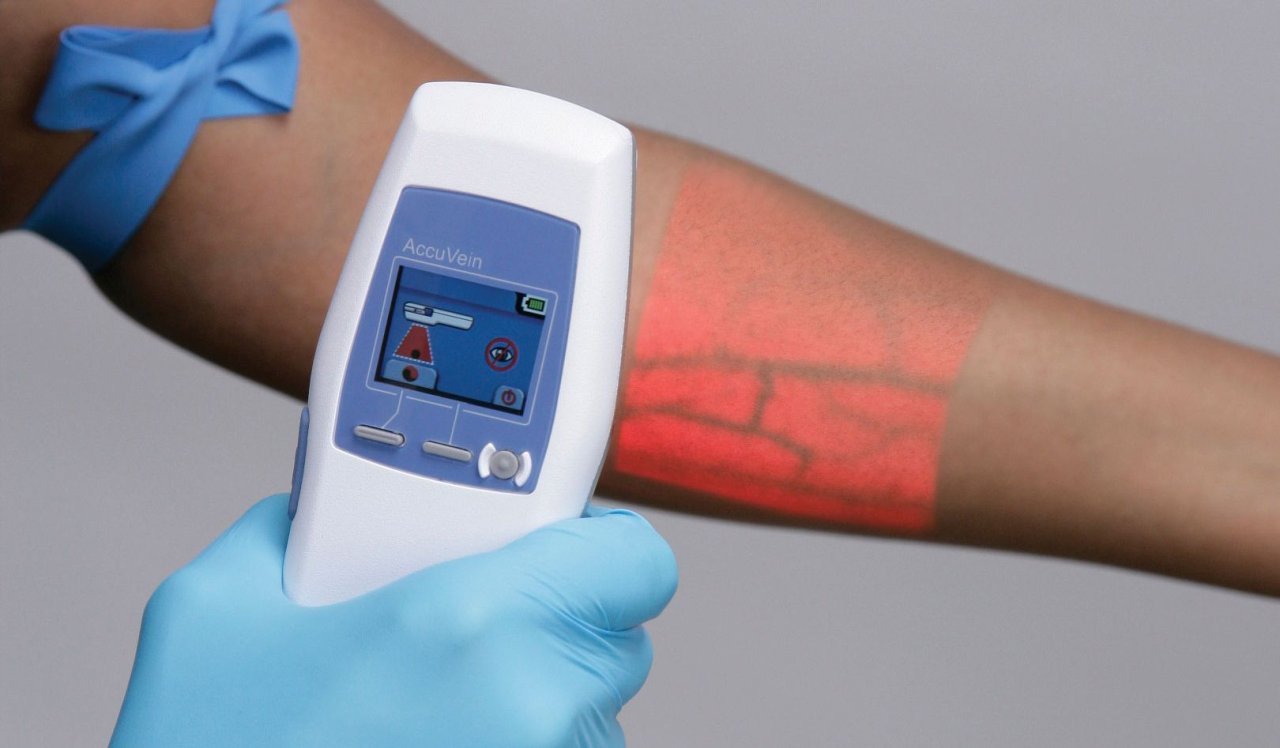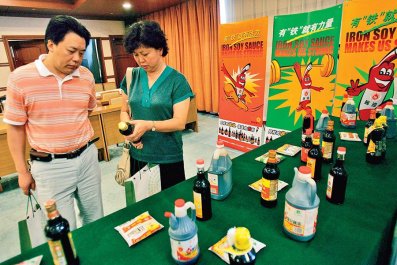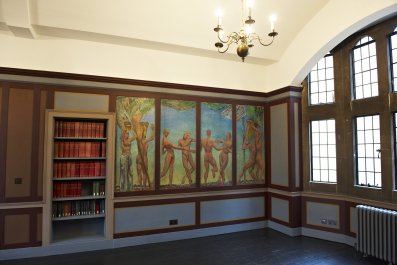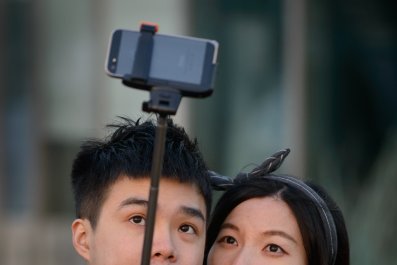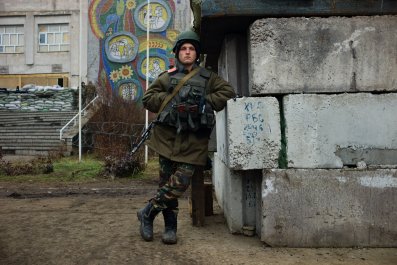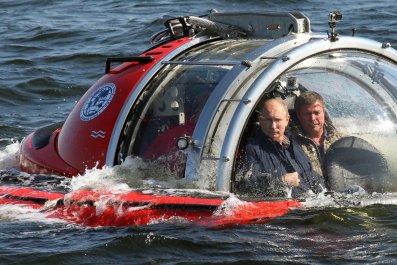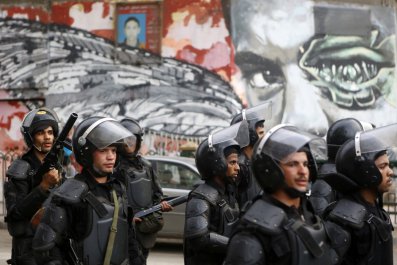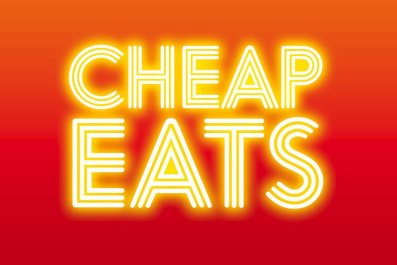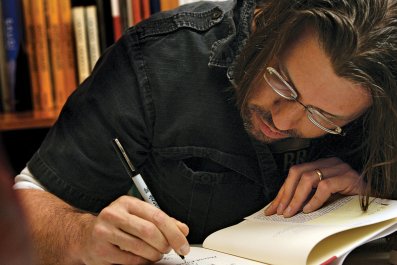Americans stick a lot of needles in their veins. There's an estimated 2.7 million vein sticks every day in the U.S., and blood tests inform over 70 percent of medical decisions. Venipuncture is a ubiquitous function of modern medicine; between blood draws for annual checkups, IVs, blood donations and more, nurses are constantly seeking out the right vein to delicately skewer.
But despite the pervasiveness of the procedure, drawing blood remains an arduous task. Finding a vein is often difficult; an estimated 30 percent of patients require multiple sticks.
AccuVein, a New York–based company, recently developed a device that could help put an end to missed veins. It uses noninvasive infrared technology to project an image of a person's veins onto the skin's surface; when a patient's arm is scanned, the musculature appears red, and the veins show as dark lines. Although the technology used by AccuVein has been around for nearly a decade, it has only recently become viable for use in a standard health care setting. Early vein visualization devices were too expensive for most health clinics, and far too heavy—weighing in at close to 150 pounds—to be of practical use. AccuVein's new AV400 weighs only 9.7 ounces (about as much as two iPhone's) and costs only $5,500 a pop.
The device is already being used in over 3,000 health care facilities, the company says, including many teaching hospitals, where administrators rave about it. "Before AccuVein, the only option for finding a vein, especially with young, elderly, dark-skinned, and obese patients, was going by feel which obviously presents a lot of problems," says Catherine Nunn, the coordinator of the venous access program at NYU Langone Medical Center, which uses the AV4000. Vein finder technology, she adds, makes "patient movement a non-issue." Combined with shortening the time it takes to perform a procedure, "leads to a higher level of confidence among venipuncture technicians. A confident technician means a confident patient."
Though additional research needs to be done, one early study presented at the 2014 Infusion Nurses Society Annual Convention showed that 81 percent of nurses felt they were more capable of inserting an IV using vein visualizing devices. In an AccuVein survey, 93 percent of respondents gave a facility a higher satisfaction score if it used vein visualization technology. The majority of respondents also reported that they would be willing to drive out of their way to a facility that used such a device if given the option.
And helping to quell the fears associated with needle sticks could increase the number of people vaccinated every year. "There are generally two types of people who don't get vaccinated," says Dr. William McKay, professor of pain management at the University of Saskatchewan. "The first are people who are paranoid over vaccinations and think they do more harm than good. The second are people with needle phobia." There may not be much that technology can do to help the first group, but vein visualization devices may be able to soothe the fears of the second.



